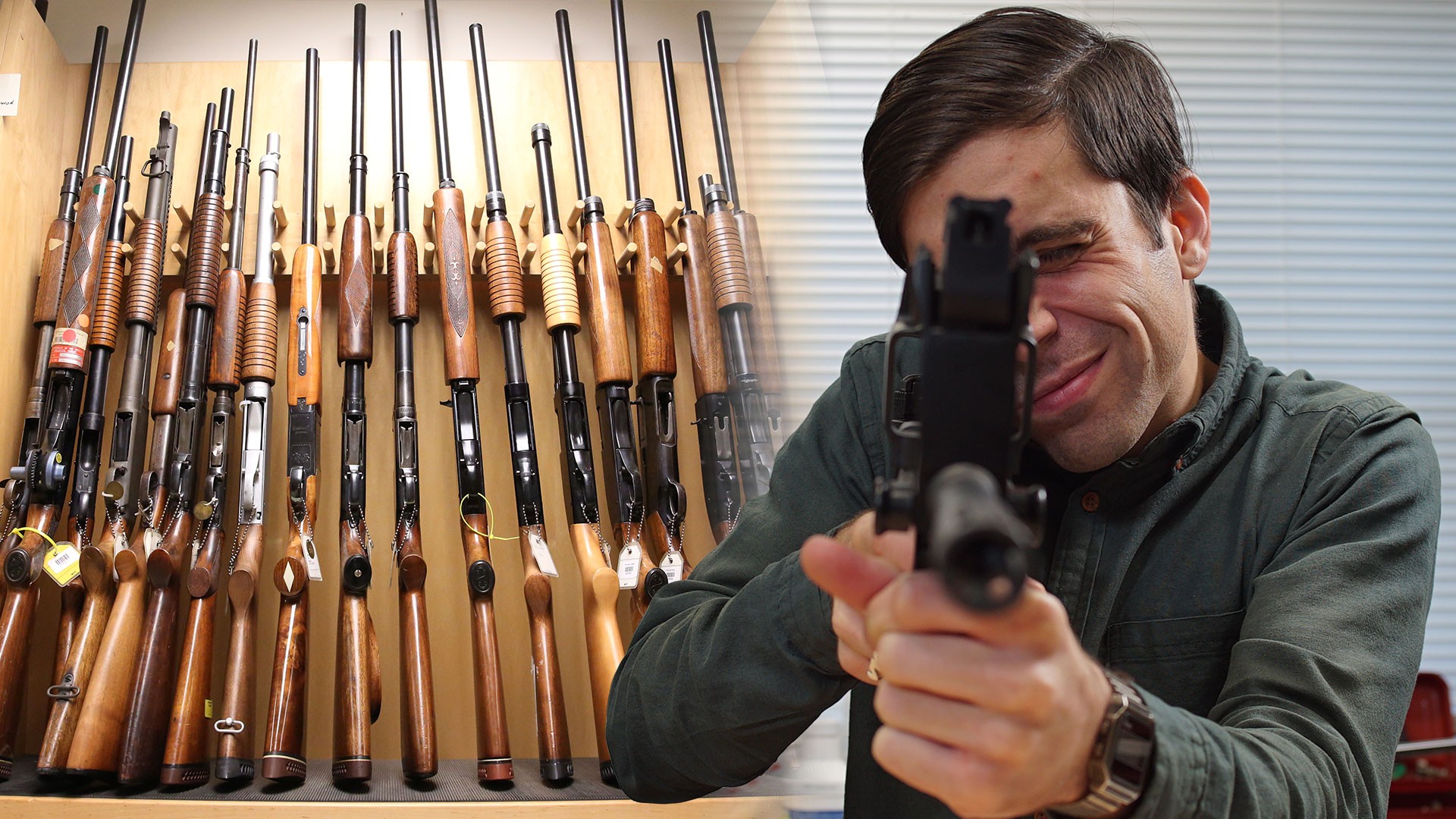This year was the deadliest year for mass shootings in modern U.S. history, and based on monthly trends, this year is stacking up to rival 2016 for the highest number of mass shootings across the board.From a firearms-stacked high-rise hotel suite, a lone shooter killed 59 people at a country music festival in Las Vegas, Nevada in October. The shooting was the deadliest the nation has ever seen. Just 35 days later, a man with a marked history of domestic violence and erratic behavior opened fire on a Baptist church in the rural town of Sutherland Springs, Texas, killing 26 people including more than a dozen children. That shooting is one of the five most deadly mass shootings in U.S. history.
Advertisement
There’s no official count of the number of mass shootings that happen across the country. Depending on who you ask, 2017 included 11 mass shootings, or 410, or 331, or another number somewhere in between.These differences mostly have to do with disagreements over what constitutes a mass shooting. Mother Jones defines mass shootings as “indiscriminate rampages” resulting in four or more deaths from a single shooting incident in a public space. Gun Violence Archive, using a broader definition, specifying a mass shooting as four or more people, besides the shooter, being shot or killed in a single incident. Mass Shooting Tracker uses a similar definition, but includes shooter deaths and suicides.Here’s what this year’s mass shootings look like according to three different tracking organizations, as of December 18, 2017:“2017 follows a pattern that has been apparent over the last eight years or more."
And while the numbers of shootings differ between organizations, a steep increase in mass shootings, shooting deaths, and shooting injuries appear across the board. 2017 brought a devastating spike in all three categories, but it also follows a mostly steady increase over the last decade, and a definite spike over the last three years.“2017 follows a pattern that has been apparent over the last eight years or more. What’s clearer than whether or not we’re having more mass shootings or not, is how deadly they are. The number of people who have died, the number of people who have been shot, in those instances has been going up. It was going up before 2017. 2017 continued and perhaps accelerated that trend,” Director of the Johns Hopkins Center for Gun Policy and Research, Daniel Webster told VICE Impact. “There’s a convergint set of conditions, that lead us to a 2017. But they’re a common set of factors we’ve been talking about for a long time.”
Advertisement
Federal responses to the nation’s mass shooting epidemic have been slow moving, especially with Republicans holding control in both the House and Senate. And increased rollbacks to Obama-era gun control legislation, particularly around background check policies, continue to hinder actions against large-scale gun violence.
In February, the House voted to repeal a 2016 regulation requiring the Social Security Administration to share information regarding mentally ill recipients with the national gun background check system. And last month, tens of thousands of names barred from purchasing a firearm due to “fugitives from justice” status were cleared after the Department of Justice changed the definition to only include fugitives who had crossed state lines.“We continue to make it easy, because of gaps in federal law, for dangerous people to quickly get guns. And that is not new in 2017, it wasn’t new in 2016, it wasn’t new in 2015,” Avery Gardiner, the Co-President of gun violence protection organization the Brady Campaign, told VICE Impact. “About 1-in-5 guns are sold without any background check at all. And the way that we’ve devised our system to prevent gun violence in this nation centers around that background check.”“We continue to make it easy, because of gaps in federal law, for dangerous people to quickly get guns. And that is not new in 2017, it wasn’t new in 2016, it wasn’t new in 2015."
Advertisement
Attempts to ban bump stock (a device that allows a semi-automatic rifle to mimic the firing capacity of an automatic rifle) have also failed or stalled in both the House and Senate. The device is largely credited for Las Vegas shooter Stephen Paddock’s ability to kill or wound more than 500 people in about ten minutes. Despite early bipartisan support, no formal action has been taken.
Check out more videos from VICE:
The House also passed the Concealed Carry Reciprocity Act earlier this month, which, if approved across federal channels, would require states to respect other states’ concealed carry laws within their own state lines. This would effectively override state-supported gun control policy and, theoretically, could allow anyone to carry a concealed firearm regardless of licensing, training, or local law.But where the federal government has failed, some states have shined. 19 states, which collectively include almost half of the nation’s population, have extended basic federal background check requirements, with nine states and Washington D.C. requiring universal background checks for all firearm sales, whether from a licensed or unlicensed dealer. Last year, Nevada became one of the newest states to extend background check policy, however, the law has not yet been put into effect.
Check out more videos from VICE:

The House also passed the Concealed Carry Reciprocity Act earlier this month, which, if approved across federal channels, would require states to respect other states’ concealed carry laws within their own state lines. This would effectively override state-supported gun control policy and, theoretically, could allow anyone to carry a concealed firearm regardless of licensing, training, or local law.But where the federal government has failed, some states have shined. 19 states, which collectively include almost half of the nation’s population, have extended basic federal background check requirements, with nine states and Washington D.C. requiring universal background checks for all firearm sales, whether from a licensed or unlicensed dealer. Last year, Nevada became one of the newest states to extend background check policy, however, the law has not yet been put into effect.
Seven states, including New York, California, and Connecticut, as well as Washington D.C. maintain bans on assault weapons. Eight states, including Maryland, Massachusetts, and New Jersey ban the use of large capacity magazines with any firearm. This year, Hawaii, the only state other than D.C. requiring the registration of all firearms, enacted a law requiring law enforcement to report the names of people denied gun permits on legal grounds to the state Attorney General and other state legal channels.Where the federal government has failed, some states have shined.
Advertisement
Mass shootings are more than just a legislative issue, but strong policy can prevent gun use and ownership without appropriate review and documentation. Going into 2018, stricter gun control policies are on horizon for states including California, and are already being entertained by New York, Oregon and others for the coming legislative year.With the federal government largely gridlocked against gun policy reform, policy moves to prevent the scale of mass shootings seen in 2017 are likely to fall to the state and local level. You can make gun violence prevention a voting priority during 2018’s midterm elections, and let your representatives know that preventing mass shootings is a legislative issue, and a constituent priority.stay up to date on gun violence prevention news, and educate yourself on issues relating to firearm violence and abuse. Organizations like the Giffords Law Center make it easy to monitor gun violence prevention policy at the state and federal levels, and groups like the Brady Center and Everytown for Gun Violence make it easy to get involved at the grassroots level through localized events and group meetings.Regardless of where you fall on the political spectrum, reach out to your elected officials and tell them how you feel about gun control laws. Legislation doesn't move itself and this is an issue you're concerned about, lawmakers from the local to national level need to hear from you.
